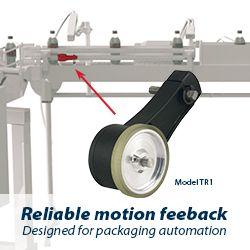Capital investments in advanced manufacturing environments require careful consideration, especially if that investment is for a new process or technology. If you are looking at investing in OLP here are some things to consider about the potential return on investment (ROI).
 Calculating the ROI of Offline Robot Programming Software
Calculating the ROI of Offline Robot Programming Software

Article from | Robotmaster
Offline Robot Programming (OLP) is catching more and more traction in manufacturing facilities as one of the downsides of robots is the time it can take to program complex parts via teach pendent. Offline Robot Programming takes the programming “offline” – away from the teach pendent / robot cell – allowing the user to generate the robotic code from their computer and upload it to the robot. Learn more about OLP by reading our previous article Why use Offline Robot Programming Software and how to get started.
Capital investments in advanced manufacturing environments require careful consideration, especially if that investment is for a new process or technology. If you are looking at investing in OLP here are some things to consider about the potential return on investment (ROI).
ROI of usability
The OLP software being considered should be a simple, straightforward, hassle-free user experience. Your OLP application should not require advanced degrees in computer programming or robotics to operate it. Neither should it be a robot software emulator that just mimics a traditional pendant interface.
When approaching the ROI discussion, easy-to-use software will get used more readily. Beginners become power users quickly, allowing minimal disruption, quick ramp-up, and better programming outcomes. This translates to lower cost per use and lower total cost of ownership.
Intuitive OLP should provide the power to fully exploit the capabilities of your robot cell. A benefit of OLP is that program validation can be done offline and from any location resulting in a reduction of robot downtime and travel time for the supporting staff. An easier-to-use OLP allows a programmer to quickly determine if there is an issue with the program and provides intuitive tools to solve them.
ROI of compatibility
Most robot manufacturers create software specific to their brand. However, these are proprietary and may be inflexible and may not have all the software tools of a leading OLP software application. As well, proprietary software is seldom compatible across multiple brands, and it can be difficult to find upgrades and support for older robots.
OLP that is compatible with multiple robot environments and can be installed and implemented quickly, reduces your costs. If you have robots from different manufacturers, you can use the same OLP software for all of them. Maintaining multiple OEM software solutions consumes resources; it can require multiple staff users and more training and time in updates for each platform. In a high-mix, low-volume manufacturing environment, this can save hours/days of production downtime. Quite simply, employees gravitate and adopt new technology more readily when the OLP software solution can be used across various brands and is easy to use and learn.
ROI of planning
An advantage of OLP is that a digital model of the robot cell can be built, validated, and perfected before the robot is installed. OLP software can simulate the robot installation and operations virtually before the actual installation.
Troubleshooting can be done virtually without shutting down the production line and issues can be resolved before installation, making the time between installation and operation much shorter. The robot can be installed, programmed, tested, your staff trained, and the robot up and running in a fraction of the time because program optimization was completed prior to installation.
ROI of programming
Programming on a teach pendant can be laborious and time consuming. Complex paths can require hundreds, if not thousands, of points that can take days to program manually. The same job can be accomplished by a good OLP in hours or minutes. A good OLP solution has pre-defined process parameters and is able to rapidly identify issues and opportunities to optimize the programming path and robot trajectory. Error-free complex programs can be quickly generated with little robotic knowledge and without point-by-point intervention.
ROI of flexibility
Increased uptime
In a high-mix, low-volume environment, changing a robot to perform a different task can lead to a great deal of downtime. OLP allows the robot to shift from one function to another, seamlessly. The next job can be programmed and waiting while the existing job finishes: a couple of keystrokes and the robot moves to the next task.
As an example, changing the orientation of an end-of-arm tool is straightforward with OLP since it can be accomplished with a recompute command. If you need to change the angle of a welding tool to improve the seam, it can be accomplished quickly and easily.
New opportunities for existing robots
One advantage of a robust OLP platform is the ability to use existing robots in different ways that can expand your operation. For example, a robot that deburrs an automotive water pump can then be deployed to deburr an aerospace turbine blade without shutting down the production line.
Robots that are utilized more broadly due to a robust, easy to use OLP can result in greater machine utilization and profits.
Learn more
At Robotmaster, since 2001 we have been taking great pride in creating intuitive, easy to use Offline Robot Programming software with a team of professionals that understands manufacturing and design, kinematics, mathematics optimization, simulation, and CAD/CAM. Hypertherm is 100% employee owned, with over 1800 associates.
Want to learn more about OLP? Read our previous article: Why use Offline Robot Programming Software and how to get started or Schedule a demo with our experts and see Robotmaster in action.
The content & opinions in this article are the author’s and do not necessarily represent the views of RoboticsTomorrow

Robotmaster
Robotmaster, a Hypertherm Associates brand, is an offline, is an offline robot programming software that helps manufacturers maximize their robot's productivity with easy and efficient robot programming for a variety of applications such as cutting, trimming, milling, welding, spraying, polishing, sanding, grinding, deburring, and more. Robotmaster uses integrated CAD/CAM functionality to make robotic programming easy and intuitive for everyone, even first-time users.
Other Articles
Have You Looked at Automating Fabrication Tasks in the Past? Why Didn’t You?
Trane® Saves Over 80 Hours of Robot Programming Time
3 Benefits of Working With a Robotic Integrator
More about Robotmaster
Comments (0)
This post does not have any comments. Be the first to leave a comment below.
Featured Product

